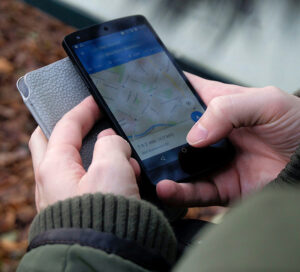How to Make Holiday Marketing Campaigns Pay Off
Holiday sales are expected to be strong again this year, although experts don’t expect them to live up to 2017’s lofty levels. According to eMarketer, all retail sales, both online and in-store, are projected to grow approximately 3.8% this year to approximately $691.9 billion. Good numbers, but not great compared to 2017’s 5.5% overall gain.
Online holiday retail sales rose 14.7% year over year to $108 billion, with Amazon grabbing most of that. However, most holiday sales still happen in stores, according to Gartner L2’s Intelligence Report: Omnichannel 2018, with nearly 85% taking place in brick-and-mortar stores.
Still, the National Retail Federation (NRF) says just about every retail sector was successful in the 2017 holiday shopping season, which runs from Nov. 1 through Dec. 31.
Timing is Everything
Years ago, many shoppers would get their feathers ruffled if they saw Christmas decorations before the Thanksgiving turkey was carved. Then Black Friday turned Thanksgiving dinner into the pregame meal for serious holiday shoppers and merchants began displaying and advertising Christmas deals in early November. Nowadays, Black Friday has turned into Black November and holiday decorations and sales are trotted out in October.
To get ready for the onslaught, merchants need to start preparing their holiday marketing campaigns in August, September, or even earlier.
Emarsys, a global marketing company, says retailers need to start early, in some cases as early as summer, to prepare for the holidays. The reason for this, according to the NRF, is because each year about 40% of consumers begin their holiday shopping before Halloween. Many of them start early to spread out spending and here are some ways merchants can be ready for the rush with their holiday marketing campaigns.
For many retailers, though, the holidays can make or break a year with many counting on up to 30% of their annual sales coming in the final two months of the year.
How to Survive the Retail Rush
The Balance, a source for business information, says preparing for the holidays is as easy as stock up, clean up, staff up and rest up.
Stocking up means more than just ordering more inventory. Small Business Trends recommends that merchants study their industry trends to discover what items are likely to be the hot sellers during the holidays.
Another recommendation during the summer is attending industry or gift-oriented trade shows to find out about the latest and greatest products. Additional research can be done online. Small Business Trends says Pinterest is a good resource to find out what items are popular.
Stock up on more than inventory, too. The holidays mean additional gift wrapping, cash register tape, bags and cards will be needed to finish those purchases.
Cleaning up the sales floor, receiving area and backroom will not only adds to the holiday luster, it entices shoppers to buy. It also reduces hysteria and stress for employees during the long shopping days.
Merchants should also hire and train any new employees who will be working during the rush. Store and product knowledge is vital to harried holiday shoppers who have many options when it comes to finding the perfect gift.
Also, don’t forget to give salespeople plenty of rest before and during the season. It helps them maintain a positive and cheery attitude during the holiday madness.
Prepare with Your POS
A sophisticated point of sale system and digital business platform can make much of the holiday marketing campaign easier, if not simple. Holiday preparation is a perfect time to review historical customer data to not just find out what items to stock, but whom to target with special holiday offers, promotions and advertising.
Independent businesses and co-operatives utilizing customer rewards programs can use their sales data to build personalized offers for loyal customers and other shoppers who might not be part of the program but fit the demographic and purchase history. It’s also possible for merchants to use data gathered from a customer rewards program to build a demographic profile of their loyal customers and use it to market to neighbors who haven’t yet shopped with them.
Both approaches allow retailers to create personalized offers for loyal customers and potential shoppers. The more those shoppers rely on their mobile phones while they’re shopping, the more valuable good point of sale systems with creative marketing features and integrations can be. With technology such as geofencing, which sends text messages to shoppers near a store much like Google Maps alerts, and Bluetooth beacons, which send special offers and product information to customers inside a store, powerful point of sale systems can help grow a business and create more holiday foot traffic.
Small Business Trends suggests one way to increase customer loyalty is reach out to them through a rewards program message and invite them to a special shopping night before Black Friday and Thanksgiving for an evening of stress-free holiday shopping.
Shopping on the Go
If the 2017 showed retail business experts anything, it showed that mobile phones are on the way to taking over as the tool of  choice for holiday shopping. Retail orders from mobile devices reached record highs during the fourth quarter of 2017, and Thanksgiving was the first time ever computer-based orders dipped below 50% of online purchases. Last Christmas, also marked the first day that mobile accounted for more than 50% of all purchases.
choice for holiday shopping. Retail orders from mobile devices reached record highs during the fourth quarter of 2017, and Thanksgiving was the first time ever computer-based orders dipped below 50% of online purchases. Last Christmas, also marked the first day that mobile accounted for more than 50% of all purchases.
Mobile shopping continues to grow this year with the devices accounting for 41% of orders in the second quarter, according to Salesforce’s Shopping Index. The Mobile Shopping Focus Report calls mobile shopping the “biggest disrupter to retail since the inception of eCommerce,” and mobile is the No. 1 source of digital growth in retail.
So, having a mobile-friendly website is a key to holiday retail success.
Virtual Preparation
Websites are as necessary to successful retail sales as properly functioning cash drawers and payment terminals, and with the proliferation of mobile shopping, mobile friendly sites are another necessity. The dramatic increase in web traffic that the holidays makes it vitally important for businesses to have a functioning and friendly website that creates the best user experience possible.
Increasing a business’s digital footprint should also include making sure it is listed on search directories such as Local.com and Google+, which can improve holiday foot traffic. According to a recent post on a Google blog, even though shoppers may spend nearly two weeks researching a potential purchase, when they move to buy, 33% want the item immediately, which often leads them to look to local retailers. Google also indicates that over the past two years, searches related to the phrases “near me” or “where to shop” have increased 85%. Learn how to make your business appear on Google Maps.
The 2017 Retail Vision Study shows that while online and mobile commerce is transforming retail shopping, 91% of all sales still happen in brick-and-mortar stores throughout the year. That means independent merchants with solid customer service, a strong online presence, and integrated digital solutions can deliver on the heightened expectations of impatient shoppers.
Delivering the Goods
When it comes to holiday deliveries, nobody beats Santa Claus. Sorry retailers and global delivery companies, but hitting every house in the world in 24 hours is untouchable. Though, more consumers are expecting the same convenience and Santa Claus-like delivery when it comes to getting their purchases, and now more retailers are trying to deliver the goods.
Dropoff, a third-party delivery company, found in its third annual Holiday Survey that 91% of shoppers are concerned about on-time delivery of Christmas gifts, which is up 6% from last year. However, those concerns don’t translate to better planning, with 77% of those same people saying they will probably be shopping at the last minute, a 15% increase over last year.
For businesses that can’t do delivery, it appears to be an attractive option to make order pickup easier. BOPIS (buy online, pick up in store) is one of the most recent trends in retail and many retailers are jumping on the bandwagon to improve customer service and satiate their expectations. Walmart has recently introduced and is heavily marketing its drive-up d elivery service. The company also recently acquired Parcel, a same-day delivery company which it plans to use in New York City during the holidays. Another big-box store, Home Depot, is investing more than $1 billion to improve its delivery system. Other hardware stores, including Ace’s In-Store Pickup, allow shoppers to order online and pickup at the store. TrueValue and Do It Best both offer free shipping of online offers to local stores where shoppers can pick up their purchases.
elivery service. The company also recently acquired Parcel, a same-day delivery company which it plans to use in New York City during the holidays. Another big-box store, Home Depot, is investing more than $1 billion to improve its delivery system. Other hardware stores, including Ace’s In-Store Pickup, allow shoppers to order online and pickup at the store. TrueValue and Do It Best both offer free shipping of online offers to local stores where shoppers can pick up their purchases.
Getting online shoppers to pick up their purchases at bricks-and-mortar stores is turning into a boon for local merchants. Known as “super consumers,” shoppers who utilize click-and-collect services more than twice a year, make unplanned purchases 51% of the time when they retrieve their goods, making them a favorite to all kinds of retailers. They spend an average of $40 on these trips.
Happy Holidays
“Consumer confidence in the U.S. is high,” eMarketer’s Yory Wurmser said in March. “With low unemployment and rising wages, the immediate outlook for consumer spending remains solid.”
Whatever your holiday marketing campaign includes for 2018, getting started early is key to making it the most wonderful time of the year.
Brian Bullock
Author



